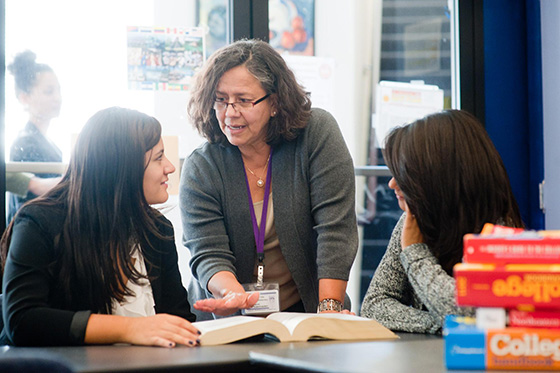In Education, the Effort Is Worth It
By Janet Murguía, President and CEO, NCLR
Latinos work very hard, and they instill in their children the kind of commitment that turns possibilities into great accomplishments. My own parents, who had little more than a middle school education, taught my siblings and me that triumph and progress require commitment and hard work. They also taught us a good education is key to advancement and reminded us that in school, as in all good things, el esfuerzo vale la pena—making an effort is worth it.
Keep up with the latest from UnidosUS
Sign up for the weekly UnidosUS Action Network newsletter delivered every Thursday.
I know my parents were not unique in that respect. It’s why I am not surprised that Latino parents across the nation welcome the new rigorous academic standards that are now the norm in more than 40 states. At each grade level, there is a set of clear, consistent academic goals that students must master before moving on to the next. Those goals, along with accurate tests that measure how well a student is mastering the academic content, guarantee something very important. By the end of high school, parents and teachers will know a student is truly prepared for success in college or the workplace.
Before the new standards and assessments, a high school diploma did not necessarily mean a student was ready for college-level work. Not only were the standards different in each state; they could be quite different from one school to the next. It meant zip codes dictated how well a student was prepared for college.
Furthermore, while Latinos tripled their college-going rate over the past two decades—an encouraging statistic—many were arriving on campus only to discover that they were not academically prepared. It meant many Latino students spent time and money on content they should have learned in high school—or worse, dropped out of college altogether.
Today, more than nine million Latino students are being taught to and assessed on these new rigorous academic standards in math and English language arts. It means the bar has been raised to ensure students learn how to think critically, solve problems that they will experience in the real world and be able to explain and justify their work. It’s far more than a demanding experience. All of those skills are necessary to succeed in college and the 21st-century workplace.
Right now we are in a period of adjustment as teachers and students get used to the new standards and tests. For example, in Kentucky, the first state to begin using these new academic standards (known by many as the “Common Core”), student test scores went down at first. But the percentage of high school graduates ready for college and careers increased from 34 percent to 62 percent in four years. And, the state’s high school graduation rate for Latino students has risen from 56 percent to 80 percent.
That’s not a bad start. But, across the U.S. we should—and can—do much better. I am certain we can accomplish it—together. While parents are setting high expectations at home, I encourage them to also speak with their child’s teacher about the new standards and assessments. Ask them how to best work in concert to ensure your child is mastering the new standards. And, don’t forget to visit NCLR’s www.RumboalTriunfo.org website, where we provide information and resources about the standards and assessments for Latino parents like you.
The truth is, none of this will be easy—for students, parents or teachers. But, as my parents showed me, Latinos never shy away from hard work, especially when it means a better future for our children.


